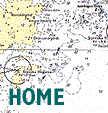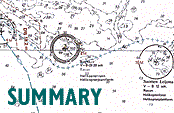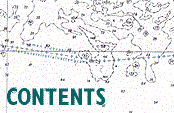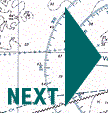CONTENTS |
 |
 |
 |
Appointment
Status
Work schedule
|
 |
 |

 |
 |
 |
 |
2.1 Operating history under Finnish flag
2.2 Under Estonian flag
2.3 Operating history with regard to wave conditions
|
 |
 |
 |
3.1 Background
3.1.1 Contract, specification, building and delivery
3.1.2 Newbuilding inspection
3.2 General description and data
3.2.1 General arrangement
3.2.2 The hull and deck arrangement
3.2.3 Propulsion system and control
3.2.4 Electrical system
3.2.5 Ballast system
3.2.6 Car deck arrangement
3.2.7 Bridge layout
3.2.8 Navigation equipment and systems
3.2.9 Communication equipment
3.2.10 Maintenance, modifications and damage
3.3 Bow visor and ramp installation
3.3.1 General
3.3.2 Detailed technical description of the bow visor
3.3.3 Design documentation for the bow visor and its locking devices
3.3.4 Detailed technical description of the bow loading ramp
3.3.5 Actuating, monitoring and control systems for the bow visor
and the ramp
3.3.6 Surveys, maintenance, damage and repairs
3.4 Emergency and life-saving arrangements and equipment
3.4.1 General
3.4.2 Lifeboats and rafts
3.4.3 Lifebuoys and lifejackets
3.4.4 Emergency beacons
3.4.5 Emergency alarm systems
3.4.6 Escape routes and instructions
3.4.7 Passenger information
3.5 Cargo handling system
3.5.1 Cargo lashing equipment
3.5.2 Operating practice and instructions
3.6 Certificates and inspections
3.6.1 Compliance with international conventions
3.6.2 Certificates valid at the time of the accident
3.6.3 Collision bulkhead compliance
3.6.4 Statutory inspections
3.6.5 Classification society inspections
3.7 Operational characteristics of the vessel
3.7.1 General observations
3.7.2 Speed resources
3.7.3 Stability documentation
3.7.4 Seakeeping characteristics
|
 |
 |
 |
4.1 General
4.2 The crew
4.2.1 The manning of the ship
4.2.2 Qualifications of the deck officers and the deck crew
4.2.3 Qualifications of the engineers and the engine crew
4.2.4 The catering crew
4.3 Working routines and organisation
4.3.1 Deck department
4.3.2 Engine department
4.3.3 Catering department
4.4 Safety organisation
4.4.1 The development of the safety organisation
4.4.2 Alarm signals
4.4.3 Alarm groups
4.4.4 Training and drills
|
 |
 |
 |
5.1 Timetable and route
5.2 Status of the vessel on departure
5.3 The departure condition
5.4 Meteorological conditions
5.4.1 Weather
5.4.2 Waves
5.4.3 Light conditions and visibility
5.4.4 Hydrological conditions
5.5 Speed
|
 |
 |
 |
6.1 Introduction
6.2 Summary of testimonies by surviving crew members on duty
6.2.1 Summary of testimonies by the trainee second officer
6.2.2 Summary of testimonies by the able-bodied seaman (AB seaman) on watch
6.2.3 Summary of testimonies by the third engineer
6.2.4 Summary of testimonies by the system engineer
6.2.5 Summary of testimonies by the motorman
6.3 Summary of testimonies by surviving passengers and off-duty crew members
6.3.1 Testimonies concerning cargo lashings
6.3.2 Reports from deck 1
6.3.3 Reports from deck 4
6.3.4 Reports from deck 5
6.3.5 Reports from deck 6
6.3.6 Reports from deck 7
6.3.7 Reports from deck 8
6.3.8 Reports from uncertain locations
6.3.9 Reports from the staircases
6.3.10 Reports from the open deck, deck 7
6.3.11 Reports from witnesses in the water
6.3.12 Reports from witnesses in various floating devices
6.3.13 Summary of witness reports concerning lifejackets
|
 |
 |
 |
7.1 Summary of the operation
7. 2 The rescue organisation
7.2.1 General
7.2.2 Finland
7.2.3 Sweden
7.2.4 Estonia
7.2.5 Co-operation
7.3 The maritime radio distress and safety systems and the distress traffic
7.3.1 The maritime radio systems
7.3.2 Distress and safety watch
7.3.3 The recorded distress traffic
7.3.4 EPIRB beacons
7.4 Initiation of rescue actions
7.4.1 General
7.4.2 Action
7.5 The rescue operation
7.5.1 The sea traffic in the area
7.5.2 General considerations, vessels
7.5.3 Action taken by the vessels
7.5.4 General considerations, helicopters
7.5.5 Action by SAR helicopters
7.5.6 Action taken by fixed-wing aircraft
7.5.7 Transport of rescued persons to safety
7.6 The human outcome
7.6.1 Data about victims and survivors
7.6.2 Autopsy observations
|
 |
 |
 |
8.1 Locating the wreck
8.2 ROV inspections
8.3 Recovery of the visor
8.4 Diving investigation
8.5 Damage to the wreck
8.5.1 General condition of the wreck
8.5.2 External hull damage
8.5.3 Visor damage
8.5.4 Ramp damage
8.6 Damage to the visor and ramp attachment devices
8.6.1 The visor bottom lock
8.6.2 The visor side locks
8.6.3 The visor hinge arrangement
8.6.4 The visor actuating arrangement
8.6.5 The ramp attachment and locking devices
8.6.6 The visor and ramp indicating devices
8.7 Condition of the interior
8.8 Observations on the navigation bridge
8.9 Victims
8.10 Life-saving equipment
8.11 The EPIRB beacons
8.12 Other observations

|
 |

 |
 |
 |
9.1 International co-operation and conventions
9.2 National maritime administration and legislation
9.3 Classification societies
9.4 The relationships between owner, shipyard, administration and class
9.5 The impact of the HERALD OF FREE ENTERPRISE accident on the development of safety regulations
|
 |
 |
 |
10.1 Introduction
10.2 Development of the traffic
10.3 Cargo deck arrangement
10.4 The Tallinn-Stockholm ro-ro ferry operations
|
 |
 |
 |
11.1 General
11.2 A brief history of incidents
11.3 The DIANA II incident

|
 |

 |
 |
 |
12.1 Determination of sea loads on the visor by model tests
12.1.1 Test program
12.1.2 Summary of results
12.1.3 Long test series in oblique bow seas
12.1.4 Wave load components - influence of wave height, heading and speed
12.2 Numerical simulation of vertical wave loads on the bow visor
12.2.1 Introduction
12.2.2 Simulation method
12.2.3 Results
12.2.4 Comparison with experimental results
12.3 Estimate of maximum wave loads on the visor for the conditions at the accident
12.4 Predictions of wave-induced motion
12.4.1 Computation method
12.4.2 Results
12.5 Determination of hydrodynamic characteristics in heeled conditions using model tests
12.6 Simulation of flooding and sinking of the vessel
12.6.1 Floating conditions and stability during flooding
12.6.2 Water inflow simulations
12.7 Investigation of visor attachment
12.7.1 General
12.7.2 Material identifications and microscopical observations
12.7.3 Investigations of the attachments
|
 |
 |
 |
13.1 Meteorological conditions
13.2 Course of events
13.2.1 Introduction
13.2.2 Preparations for the voyage
13.2.3 Condition of visor and ramp closure
13.2.4 The voyage up to the accident
13.2.5 Separation of the visor
13.2.6 Development of the list and sinking of the vessel
13.2.7 The evacuation
13.3 Action on the bridge
13.4 Advance indications and alarms from the bow area
13.5 Failure sequence of bow visor and ramp
13.6 Flooding of the accommodation and sinking of the vessel
|
 |
 |
 |
 |
15.1 Design basis and requirements for the bow visor
15.1.1 Bureau Veritas' requirements for the visor attachments
15.1.2 Shipyard design procedures
15.2 Sea loads on the visor
15.3 Evaluation of the bottom locking device
15.4 Evaluation of the side locking devices
15.5 Evaluation of the hinges on deck
15.6 Manual locking devices
15.7 Evaluation of the visor actuators and their attachments
15.8 The ramp locking devices
15.9 Other damage to the visor
15.10 Failure modes and combined strength of the attachment devices
15.11 Design considerations
15.12 Comparison of design requirements and actual installation
15.13 Class and administration implementation requirements
|
 |
 |
 |
16.1 The start of the evacuation
16.2 The mobilisation of the command group on the bridge
16.3 Alarms and activities by the bridge
16.4 Activities by crew members
16.5 Obstructions to the evacuation
16.6 Passengers' and crew members' reactions
16.7 The limits for evacuation and the outcome
16.8 The rescue equipment
|
 |
 |
 |
17.1 Introduction
17.2 The distress traffic
17.3 Responses to the Mayday calls
17.3.1 Vessels
17.3.2 MRCCs and MRSCs
17.4 Readiness of the rescue units
17.5 Management
17.5.1 MRCC Turku
17.5.2 The On-Scene Commander (OSC)
17.6 Action at the accident site
17.6.1 Vessels
17.6.2 Helicopters
17.7 Other observations
17.7.1 Rescue equipment
17.7.2 The journalists in helicopters
|
 |
 |
 |
18.1 History of compliance with requirements
18.2 Effects of non-compliance with requirements
18.3 The role of the administration
|
 |
 |

 |
 |
 |
 |


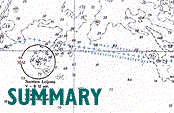
![[this page]](kuvat/navmuyla/4conten.gif)
